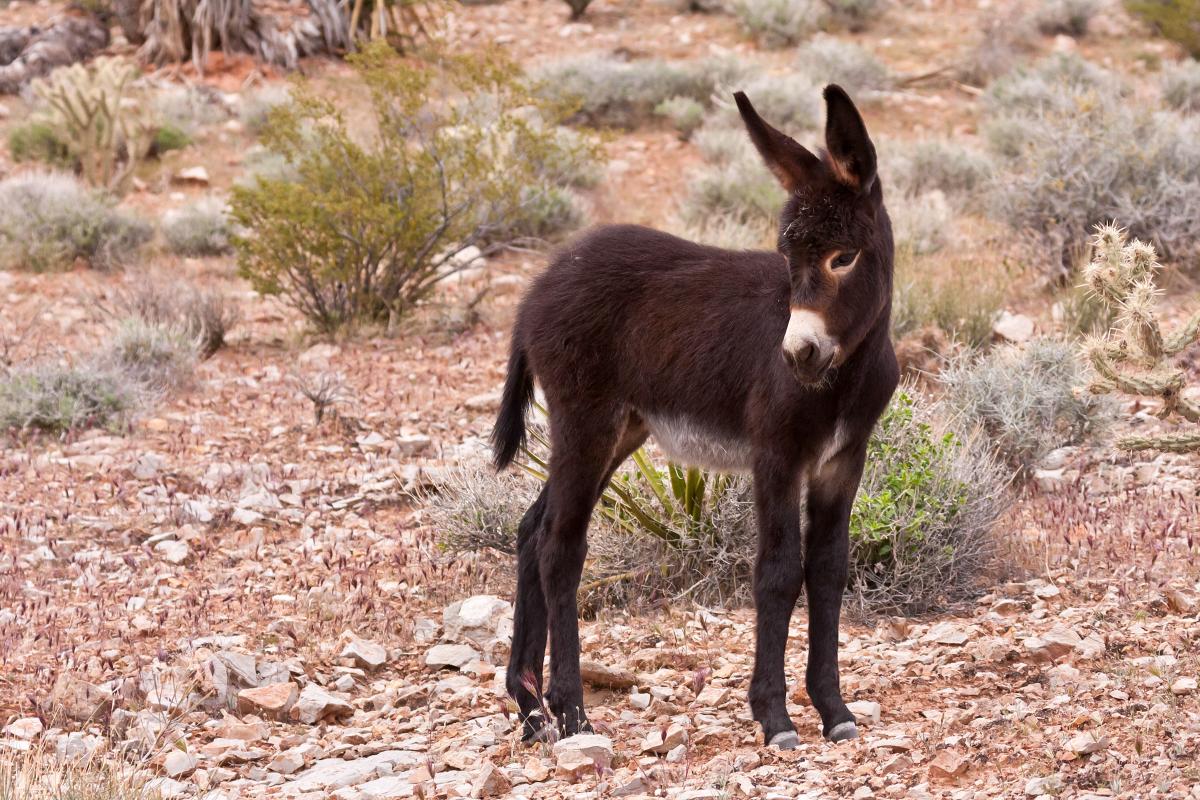Our blog series, Herds Across the West, examines wild horses and burros by herd, Herd Management Area (HMA) and state to provide a deeper understanding as we report on roundups and actions affecting each region.
Red Rock Herd Management Area (HMA) | Las Vegas, NV
Where to Find Them
The Red Rock wild horses and burros live in the open range of the Mojave desert flanked by beautiful brown and red rock mountains about 20 miles west of Las Vegas, Nevada. The HMA encompasses nearly 560,000-acres that stretch from Goodsprings to Kyle Canyon Road.

While the horses in the area tend to be more elusive and harder to find, they are most often seen on both the northern and southern ends of the Red Rock HMA, while the burros are often be spotted along SR-159 near First Creek Trail and around the village of Blue Diamond.
These incredible animals have adapted to the harsh conditions of the desert. They live peacefully surrounded by desert shrubs, pinyon pine, and juniper trees. In the glaring heat of the summer, the horses live in the open country while the burros tend to reside in shadier areas.
In the glaring hot summer, the horses and burros travel up to five miles to find water. They’ve been observed drinking once daily, and even they have been observed drinking every other day. The resilience of wild horses and burros and their ability to adapt is incredible!
About the Herds
 The BLM sets a population limit, or "Appropriate" Management Level (AML) at just 16-27 wild horses and 29-49 wild burros. For context, that equates to, at the high end, 5,925 acres for every one horse and 3,265-acres for every one burro.
The BLM sets a population limit, or "Appropriate" Management Level (AML) at just 16-27 wild horses and 29-49 wild burros. For context, that equates to, at the high end, 5,925 acres for every one horse and 3,265-acres for every one burro.
According to the BLM, Permanent water sources consist of springs found in the mid-range elevations along the slopes of the Spring Mountains. The animals can travel up to five miles and back every day for water during the drier part of the year. Animals drink at least once each day during the hotter part of the year, but can survive by drinking every second day during the winter and early spring.
Roundup Status
There was an 'emergency' roundup in this area in 2019. While the wild horses were not in immediate danger, the BLM preemptively scheduled a removal citing that there was not enough water to support the number of horses in the area. The agency used bait water traps, capturing 237 wild horses in one week. There are currently no roundups planned for this area.


